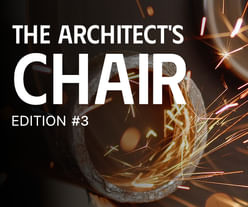
Elizabeth Diller and Ricardo Scofidio have been announced as winners of the Royal Academy of Arts' Architecture Prize, chosen for their inspiring and enduring contribution to the culture of architecture. The New York-based architects were celebrated by the judges for a body of work that consistently shows how buildings can "enhance cities and capture the public imagination." They are only the second-ever architects to receive the annual award, following last year's honoring of Japanese architect Itsuko Hasegawa.
Their studio, Diller Scofidio + Renfro, are currently designing a new "acoustically perfect" concert hall, the Center for Music, at London’s Barbican. The project, which has an estimated cost of £288 million, is their first major work in the UK and is expected to usher in a new cultural center for the city. Other major works for the firm, which they run together with Charles Renfro and Benjamin Gilmartin, include the 1.5 mile-long High Line public park in New York and the Broad museum in Los Angeles.
A far cry from their studio's rebellious beginnings best represented by their temporary pavilion for the 2002 Expo in Switzerland, the Blur Building, the husband-and-wife team reflected on their architectural journey upon receiving the award. "We started as dissidents, challenging architecture as a self-contained discipline and probing its intersections with other cultural forms using a large toolkit of media," they said in a joint statement. "A combination of naivety and determination allowed us to realize some challenging projects over time but it was not until our collaboration expanded to include new partners and a growing staff that we were truly able to push architecture’s untapped agency and convert provocations into meaningful action in cities and institutions."
Their influence on the field squares with the mission of the annual award, which was created to celebrate imaginative architecture that lifts the human spirit. "‘At the Royal Academy we view architecture as a social art form, that is integral to our lives and ever-present. We therefore think about architecture broadly and aim to contextualize its relevance within society and culture, often acting as translators between the profession and the public," said Royal Academy head of architecture and curator Kate Goodwin.

Diller and Scofidio were selected by a jury—chaired by Stanton Williams co-founder Alan Stanton—that includes LSE Cities director Ricky Burdett, Sauerbruch Hutton co-founder Louisa Hutton, head of architecture at the University of Johannesburg Lesley Lokko and broadcaster Kirsty Wark. Alongside, the jury shared their shortlist for the first ever Royal Academy Dorfman Award, which recognizes emerging practitioners. The four finalists this year include Fernanda Canales (Mexico), Alice Casey and Cian Deegan of TAKA (Ireland), Mariam Kamara of Atelier Masōmī (Niger), and Boomserm Premthada of Bangkok Project Studio (Thailand).

Re:Form – New Life for Old Spaces
Register by Wed, Jan 22, 2025
Submit by Tue, Sep 2, 2025

Ceramics of Italy Tile Competition
Register/Submit by Fri, Feb 14, 2025

The Architect's Chair / Edition #3
Register by Wed, Jan 15, 2025
Submit by Tue, Feb 18, 2025

Hospice - Home for Terminally Ill #4
Register by Wed, Jan 15, 2025
Submit by Mon, Jun 16, 2025
5 Comments
Their life is just a shower 'o prizes!
I have seen some of their projects in person and I cannot understand why they get any prize
it’s like a small club of people that keep giving each other prizes. So silly.
Lizzie and Scoffy get the prize, but not Renfro or any others at DS&R.
I guess the prize jury subscribes to a view that architecture is the product of individuals and the firms behind them don't contribute enough to merit inclusion.
^ They're a practice since the early 80s?, +R was added only in 2004. So in that way it makes sense, sort of, when talking about their "enduring contribution". But I agree with you, those awards are ridiculous when not including the entire firm. The revering of the genius individual (or in this case the individual and his student) does not take into account how one does architecture at all.